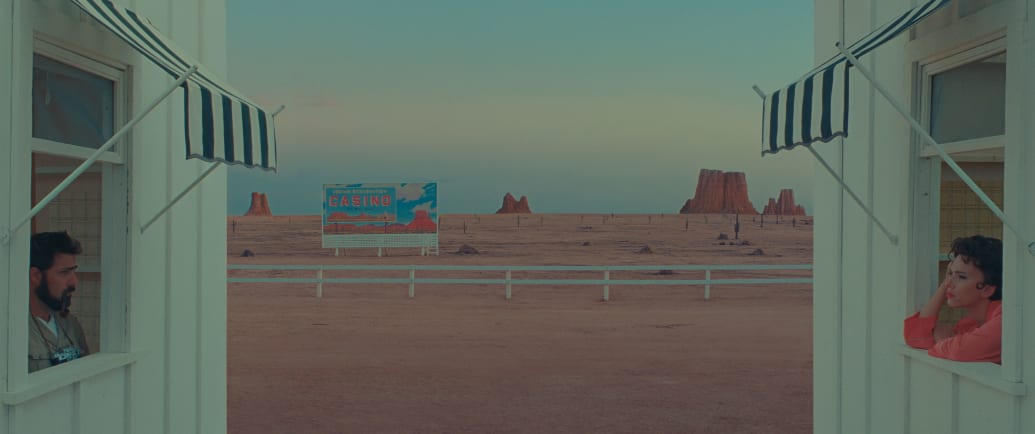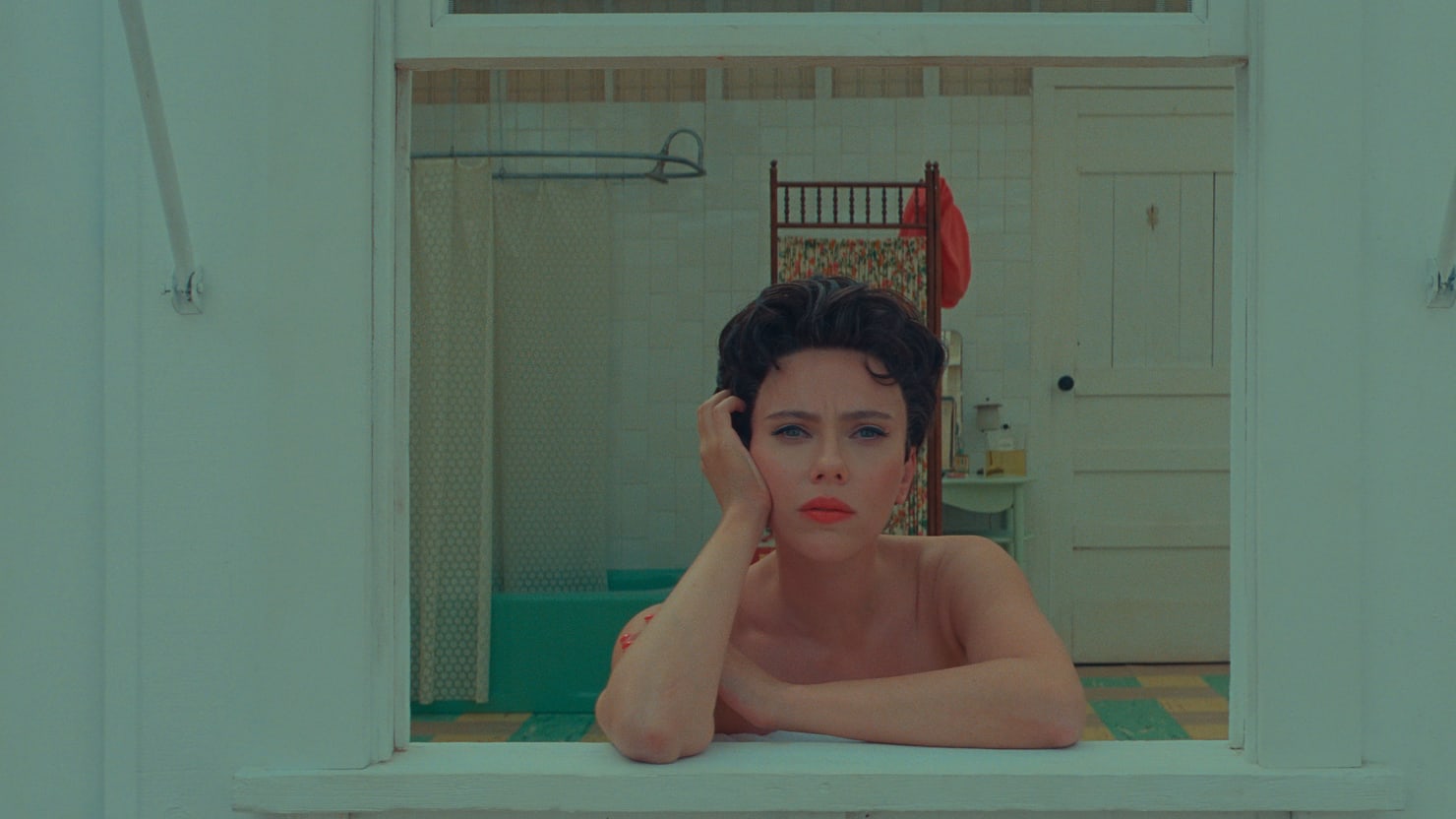As a (relatively) young person, my life often feels centered around memes. Hundreds of years from now, I’d like to think history will consider 2023 a year defined by people scrolling through TikTok and Instagram, sending friends videos, and waiting for them to respond with things like “That’s SO me” or a series of cry-laughing emojis. We’re really in the golden age.
One of the year’s most popular meme trends began in April when a TikTok user named Ava Williams posted a video with the caption, “You better not be acting like you’re in a Wes Anderson film when I get there.” Set to the song “Obituary” from Anderson’s 2021 film The French Dispatch, the video features a series of images that wouldn’t be out of place in one of the director’s actual films—including a picturesque train carriage and a quirkily dressed character, staring emotionless at the camera.
Williams’ TikTok has now been viewed over 14 million times. The video has also inspired countless iterations from other users, which see them acting like they’re in a Wes Anderson film—usually by looking disaffected and contemplative—while getting a burger, while working at a shop, going to the supermarket, the library, or traveling around the world.
This isn’t even the only current meme about Anderson’s famed style going around—there’s also a series of AI-generated trailers of classic movies (Star Wars, Lord of the Rings, etc.) made to look like they were directed by Wes himself.
On the surface, the user-made parody videos appear to be sweet, even loving homages to the director’s signatures: picturesque interiors, highly stylized costumes, measured performances. (The less said of the hideous AI trailers, the better.) They are meant to call to mind some of his more well-defined specific works, like The Royal Tenenbaums, Moonrise Kingdom, and The Grand Budapest Hotel, which are among the most representative examples of the supposed Wes Anderson look.
But while the trend is amusing and well-intentioned, it’s also deeply frustrating to see one of American cinema’s most adventurous, introspective filmmakers be reduced to a color palette. The precise problem with the trend is that it’s purely superficial, and in so doing, it entirely misses the point of what makes the director’s work so special.

The Grand Budapest Hotel (2014) is one representative example of Anderson’s aesthetic.
Searchlight Pictures
Never has it been clearer that these memes are actually a disservice to Anderson’s work than when looking at his new film, Asteroid City, now in theaters. While Asteroid City does feature much of the idiosyncratic visual panache we’ve come to expect, the director’s application of his own style is his most advanced yet. Instead of simply relishing in his own aesthetic, he uses it to reveal something deeper about the cast of characters.
Asteroid City finds Wes Anderson operating at his most existential. The film is set in the 1950s, with the story split between two narrative threads. One takes the form of a TV presentation of the story of the making-of a play. Narrated by Bryan Cranston, this part of the film is shot in black and white and a square aspect ratio. A playwright (Edward Norton) and director (Adrien Brody) interact with the actors who perform the characters featured in the play itself, which we also see unfold. It’s the titular Asteroid City, which is shown in color, widescreen, and separated into three acts, each with title cards.
The characters in both parts of the film—comprising Anderson’s largest ensemble yet—search for a deeper meaning and a purpose that frequently eludes them. This is especially true in the Asteroid City portion of the story. While Asteroid City’s meta narrative serves to inform the core part of the film by telling a story of the creation of art, Asteroid City, the play within the film of the same name, tackles more existential concepts. Several families from all walks of life find themselves quarantined in a desert town located near a nuclear bomb testing site, after an alien suddenly appears before them during a young scientists’ awards ceremony. The government holds them hostage as it figures out the alien situation. This forces the various strangers to become well-acquainted with each other, leading to several antics and heart-to-hearts.
The film is astonishingly beautiful to look at, but especially during these segments. There, Anderson’s typically colorful aesthetic is ever-present; the odd town is full of soft shades of orange and turquoise. The pale sand stands in contrast to these pops of much sharper color. But the color palette is more than just eye candy: They highlight a harsh contrast between an idealized life and the empty, wistful realities that these characters endure. These are people stranded both here and in their regular lives, desperate for any sort of connection to process their unbearable loneliness.

Pop. 87 Productions/Focus Features
Some of the most powerful moments in Asteroid City come in conversations between Midge (Scarlett Johansson) and Augie (Jason Schwartzman), who speak to each other through the window of their respective motel rooms. Both of them have children who are receiving awards at the alien-infiltrated event. Midge, a famous actress, is obsessed with playing miserable characters to try and find any sort of purpose in art. Augie is emotionally stunted after the death of his wife—something he only just now told his four children about, despite her having died three weeks ago.
Augie and Midge’s conversations are bracing and honest; many of them take places when Midge is in the bathtub. but there’s a sense of distance between the pair—physically and emotionally—and they can never seem to properly connect. In one conversation, after their extraterrestrial sighting, Augie tells Midge that the thinks the alien looked at them strangely. “How did he look?” Midge asks. “Like we’re doomed,” Augie clarifies. Midge: “Maybe we are.”
Their teen children similarly develop feelings through their shared existential musings. “Sometimes I think I’d feel more at home outside of the Earth’s atmosphere,” Woodrow, Augie’s son, admits to Dinah, Midge’s daughter, in one such chat. Unlike her talkative mother, the only thing Dinah can do is stare back in silent agreement. Though set in the ’50s, these sorts of nihilistic self-reflections help Asteroid City feel like Anderson’s most modern film. As The Daily Beast’s review says, “if you piece all of the perfect retro production design there’s a thoroughly timely fascination with paranoia and confinement and the notion of making art under those circumstances.”
It takes a director with a great understanding of every aspect of storytelling to pull these disparate parts together into a coherent film. Especially when those disparate parts extend to the narrative in such uniquely peculiar ways: There are not only the two visual modes, one black and white, one in color, but also the two very different narratives—the meta-construction and the story proper. This unconventional construction alone is ample evidence that Anderson offers more than cute colors and actors staring at the screen.
In a recent interview with The Daily Beast, Anderson admitted that he hasn’t seen the memes. “I’ve only been exposed to [the trend] verbally… I choose not to really engage. I guess it’s because I don’t want to get distracted by that.” Anderson goes on to say he doesn’t use TikTok at all, which has likely helped him stay so creative—the man must have a lot of free time without using such addictive social media.
What Anderson is missing out on, though, is that even the silliest memes tap into something deeper—they’re valuable currency because we so often see ourselves in them. These memes, however, don’t really seek to understand why Anderson’s films are exciting. Celebrating style is worthy, but these videos reduce Anderson’s work in such a way that obscures his actual unique touches. They’re the kind of joke that you forget immediately after scrolling to the next one. But films like Asteroid City are composed of a whole lot more than people staring at a camera while dressed in monochrome—unlike the memes, they’re unforgettable.
This post originally appeared on and written by:
Barry Levitt
The Daily Beast 2023-06-18 03:14:00

